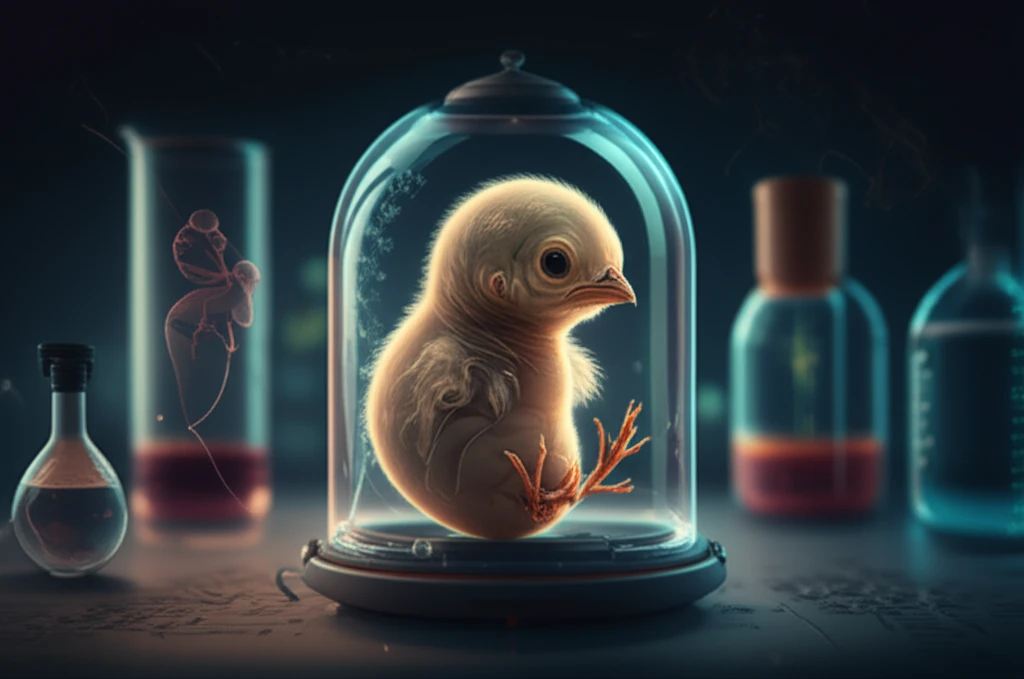
Cracking the Egg: Revolutionizing Chick Embryo Research for Advances in Developmental Studies
"A streamlined, shell-less culturing technique opens new doors for observing and manipulating chick embryos, pushing the boundaries of developmental biology."
Research in anatomy, embryology, and developmental biology relies heavily on model organisms. Chick embryos are a popular choice due to their low cost and ease of maintenance. However, the opaque eggshell presents challenges for observation. To overcome this, researchers have developed techniques such as windowing and ex-ovo culturing to view the embryo as it develops.
Both windowing and ex-ovo techniques have their own advantages and limitations. The windowing method involves creating a hole in the eggshell, while ex-ovo culturing removes the embryo from the shell entirely. Each method presents unique challenges, driving the need for optimized approaches.
This article introduces an improved and simplified ex-ovo culturing technique for chick embryos. This method enables observation of embryonic development from stage HH 19 into later stages (HH 40), allowing researchers to study organ development. This technique is easily adaptable for both undergraduate classes and advanced research laboratories.
Ex-Ovo Culturing: Solving Key Challenges in Embryo Development Research

Traditional ex-ovo techniques often involve using a Styrofoam cup or glass bowl lined with plastic wrap. While effective, this setup can be technically challenging. The plastic wrap is difficult to manage, often slipping or tearing, posing a risk to the embryo. Additionally, the setup is not very stable and can be easily knocked over, and the height of the cups can make it difficult to place the embryo under a stereomicroscope.
- Eliminates the need for high-tech equipment.
- Simplifies handling under a stereomicroscope.
- Provides ample support for microscopic manipulations.
- Enables complete viewing of the embryo into later stages of development (up to HH 40-41).
The Future of Chick Embryo Research
In conclusion, the optimized ex ovo method provides an ideal solution for viewing and manipulating chick embryos, offering unrestricted access and extending the observable stages of development. By addressing the challenges associated with traditional methods, this technique enhances research capabilities and educational opportunities in developmental biology. Researchers and students will appreciate the simplicity, stability, and accessibility it provides, paving the way for new discoveries and a deeper understanding of embryonic development.
